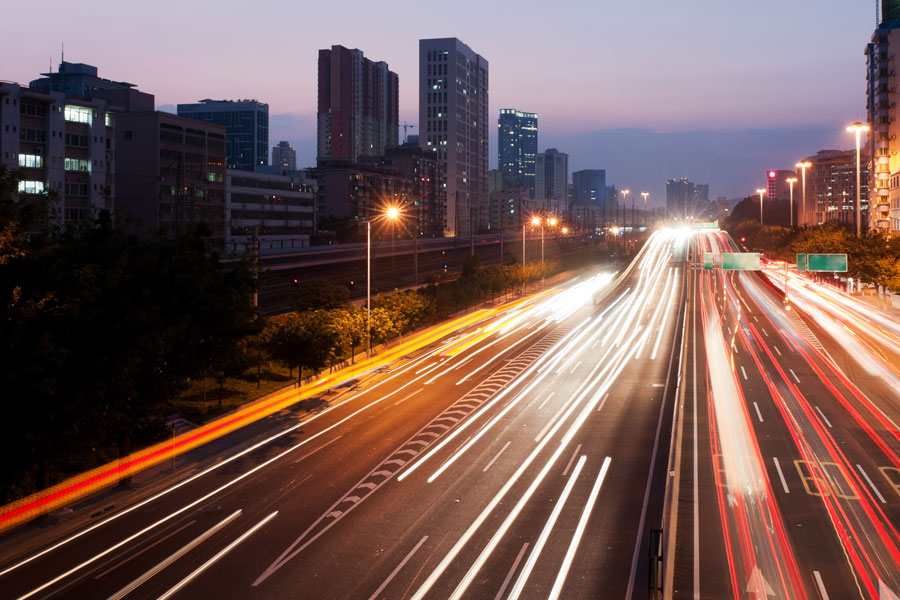March 17, 2020
Traveling the Same Roads Together: AVs and Humans

An Update on Safety and Autonomous Vehicles (AVs)
Nuro
For the first time, regulators at the National Highway Transportation Safety Administration (NHTSA) have given permission to an AV manufacturer, Nuro, Inc., to deploy 5000 low-speed electric delivery vehicles without human controls like mirrors or steering wheels.
The small, seat-less car, with gull-wing cargo doors on each side is about half the size of a regular vehicle.
Nuro will focus on delivery services for restaurants, grocers and others, such as Domino’s Pizza and Walmart. The vehicles will travel over pre-mapped areas and be monitored at all times by humans via remote control.
The major concerns about AVs of course is how they interact with humans, whether as drivers or pedestrians. In March 2018 a pedestrian in Tempe, Arizona was run over and killed by an Uber when she was jaywalking.
What does the future hold for humans and AVs as they travel down the same roads?
Some Fear AVs Will Actually Cause Reckless Driving
Naturally, the impact of Autonomous Vehicles (AV) on safe driving has become an important concern. Researchers at the Data Science Institute at Columbia University have looked at the problem. They see it in terms of making humans think they can drive less safely around AVs because their expectations are that AVs will drive more safely.
Sharon Di, assistant professor of civil engineering and engineering mechanics, recently told people at the Transportation Research Board’s 99th Annual Meeting in Washington, D.C., that “Human drivers perceive AVs as intelligent agents with the ability to adapt to more aggressive and potentially dangerous human driving behavior. We found that human drivers may take advantage of this technology by driving carelessly and taking more risks, because they know that self-driving cars would be designed to drive more conservatively.”
“We know that human drivers will take more risks and develop [a morale hazard] if they think their road environment has become safer,” Di notes. “It’s clear that an optimal liability rule design is crucial to improve social welfare and road safety with advanced transportation technologies.”
Travelers
Travelers Insurance Co., which wrote the first car insurance policy in 1897, thinks that an important way to control risk in an environment where AVs are increasingly present on the roadway is to continue using our existing insurance model and make sure that both driver-based and vehicle-based operators carry insurance.
“With the increasing adoption of semi-autonomous vehicles and the potential for fully autonomous vehicles, several policy-related questions and challenges are beginning to emerge,” said Michael Klein, Executive Vice President and President, Personal Insurance at Travelers. “It’s important that the insurance industry play a central role in policymaking discussions to develop a uniform legal and regulatory framework for autonomous vehicles. Ensuring that a clear risk transfer mechanism is in place will help facilitate the development of autonomous vehicles and the improved safety we expect they will bring to our roads.”
While research suggests the adoption of autonomous driving technology will lead to fewer accidents, collisions that do occur will likely result in costlier repairs and raise difficult questions relating to driver and manufacturer liability, victim compensation and data collection. The general risks that come with vehicle ownership, autonomous or not, will remain, including risks related to weather and theft.
Travelers released a white paper recently that addresses many of the issues surrounding AVs. Among other things, Travelers recommends that to facilitate an effective auto insurance system, the insurance industry should:
- Develop a model state law relating to autonomous vehicle insurance that builds on the current state-based regulatory and oversight structure.
- Require vehicle owners — including personal, ridesharing and company-owned vehicles — to purchase and maintain adequate insurance.
- Provide for sufficient coverage to account for the more expensive technology used in autonomous vehicles.
- Establish strong cybersecurity requirements for autonomous vehicles, including appropriate data-sharing protocols.
- Utilize insurers’ extensive consumer communication programs to help educate customers and the public on autonomous vehicle safety.
- Ensure representation of the insurance industry in policymaking and stakeholder forums.
We will continue to keep our customers updated on developments in this important area of automobile risk and safety.
